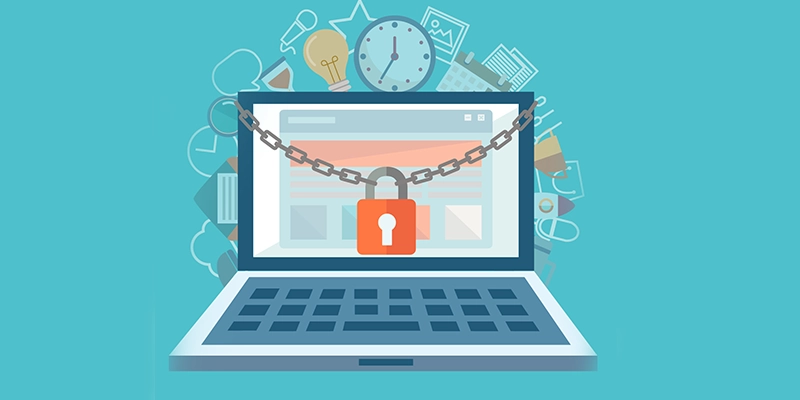Contents
Cybercrime has emerged as a formidable global threat, escalating in scale and sophistication as digital technologies permeate every aspect of modern life. With global cybercrime costs projected to exceed $10.5 trillion annually by 2025, its impact reverberates across businesses, governments, and individuals worldwide. The highly sensitive and valuable nature of the client data that law firms possess also means that firms are heightened targets for both cybercriminals and nation-states. Cybercrime in law firms has become a primary vector of risk in legal practice. As firms rely more on cloud platforms, digital case management, and remote collaboration, attackers increasingly exploit weak systems to access privileged data, including litigation strategies, financial records, M&A documents, and confidential communications.
Small and mid-sized law firms are particularly exposed. Unlike banks or government agencies, many operate without formal security protocols, dedicated IT staff, or incident response plans. The gap between the volume of sensitive data handled and the level of cybersecurity protection in place leaves firms vulnerable to ransomware, phishing, and data breaches.
Legal cybersecurity is a core element of competent and ethical practice. Attorneys who mishandle client data face serious consequences, including malpractice liability, regulatory investigations, disciplinary sanctions, and reputational harm. Security failures can compromise active litigation, destroy client trust, and disrupt firm operations.
This guide will examine:
- The global financial and strategic impact of cybercrime
- Why law firms are disproportionately targeted
- The ethical and regulatory landscape for legal cybersecurity
- How AI and machine learning are reshaping cybersecurity defense
- Practical risk management strategies for small and mid-sized firms
A proactive security posture is essential for protecting client data and maintaining firm continuity and professional integrity in an increasingly complex and hostile digital environment.
The Global Financial Impact of Cybercrime
Cybercrime cost is expected to go over $10.5 trillion annually by 2025, up from $3 trillion in 2015. If ranked as a national economy, it would be the third largest globally. Analysts estimate that ransomware damages alone will reach $265 billion per year by 2031, with businesses being cyber-attacked every few seconds.
The financial burden extends beyond stolen funds. The average global cost of a single data breach reached $ 4.88 million in 2024, a 10% increase from 2023. Losses include operational disruption, regulatory penalties, lost clients, and post-breach remediation.
Primary drivers of breach costs include:
- Healthcare, averaging 9.77 million dollars per breach, is the highest among industries
- Credential-based intrusions, which account for 16 percent of breaches and take nearly ten months to contain
- Phishing attacks are responsible for 15 percent of breaches, with high containment and recovery costs
The cybersecurity market, valued at $172 billion in 2023, is projected to exceed $562 billion by 2032. Attackers’ capabilities still outpace these investments. Cyber insurance markets are reporting persistent losses from ransomware and social engineering attacks, prompting higher premiums and more restrictive exclusions for systemic risks.
Intellectual property theft further amplifies economic damage. Stolen trade secrets and counterfeit products weaken corporate competitiveness, threaten national security, and finance organized crime. Counterfeit pharmaceuticals and defective electronics also create direct public safety hazards.
These escalating costs show that reactive security is inadequate. Law firms, as custodians of sensitive and privileged data, face elevated exposure. Global trends magnify the need for rigorous legal cybersecurity practices within the profession.
How Cybercrime Affects Critical Infrastructure
Cybercrime routinely disrupts essential services in energy, healthcare, transportation, and financial sectors. These industries rely on interconnected networks and control systems that, when compromised, can trigger widespread economic and safety consequences.
Attackers target industrial control systems, cloud platforms, and operational technology. Successful intrusions can disable hospitals, halt transportation networks, or cause cascading energy grid failures. These disruptions create significant recovery costs, prolonged downtime, and potential legal exposure for affected entities.
Data breaches involving critical infrastructure often compromise sensitive records, such as patient health information, financial transactions, and government contracts. Stolen or exposed data can lead to regulatory penalties, contractual disputes, and extensive litigation.
The economic consequences extend beyond immediate financial loss:
- Downtime results in lost revenue and service disruptions
- Recovery expenses often include forensic investigations and system rebuilds
- Regulatory fines and lawsuits compound direct damages
- National security and public safety risks increase when key systems remain offline
Law firms advising clients in these sectors must address both incident response and regulatory compliance. They often assist with breach disclosure, contractual remediation, and litigation strategy, while also evaluating the legal liability associated with compromised infrastructure.
The Role of Government and Law Enforcement in Combating Cybercrime
Governments and law enforcement agencies are intensifying efforts to counter cybercrime. These efforts include legislative reforms, specialized enforcement units, public education, infrastructure investment, and cross-border collaboration. Law firms must understand these measures to remain compliant and effectively advise their clients who are affected.
Development of Cybercrime Legislation and Policies
Governments continue to enact laws that define cyber offenses, establish penalties, and mandate security practices.
- In the United States, the Federal Information Security Modernization Act was overhauled in 2023 to improve federal cybersecurity coordination.
- The NIST Cybersecurity Framework version 2.0, issued in February 2024, emphasized governance and supply chain protections.
- PCI DSS version 4.0 became mandatory in March 2024, requiring multi-factor authentication for all processors of payment card data.
- The New York Department of Financial Services expanded ransomware notification rules, increased leadership accountability, and strengthened incident response standards.
- The European Union’s NIS2 Directive, effective as of October 2024, introduces new breach reporting requirements and increased fines. The Digital Operational Resilience Act will take effect in January 2025, obligating organizations to ensure the resilience of their digital systems.
- In 2025, forty-eight U.S. states and Puerto Rico reviewed more than 500 cybersecurity-related bills. At least nineteen states enacted measures, including mandatory multi-factor authentication for state agencies, liability limits for specific cyber claims, and alignment with NIST standards. Some states now require impact assessments for AI systems making consequential decisions, addressing cybersecurity and intellectual property risks.
These measures increase the regulatory burden on multinational organizations and legal practices advising them. Laws continue to evolve reactively as threats emerge, often lagging behind the sophistication of attackers.
Specialized Cybercrime Units and Digital Forensics
Law enforcement agencies have expanded dedicated cyber divisions with advanced digital forensics capabilities. These units investigate intrusions, trace cryptocurrency transactions, and attribute attacks. The National Intellectual Property Rights Coordination Center, led by Homeland Security Investigations, disrupts counterfeit goods markets by policing online platforms, social networks, and dark web forums.
Public Awareness and Education Initiatives
Public awareness campaigns reduce exposure to common attack vectors. Some jurisdictions, including Alabama, mandate cyber safety education in schools to build long-term societal resilience. Public advisories and industry briefings help businesses and individuals recognize threats like phishing, credential theft, and ransomware.
Investment in Cybersecurity Infrastructure and Cross-Border Cooperation
States and nations are funding cyber ranges and incident response infrastructure. International cooperation remains essential due to the borderless nature of cybercrime.
- The Budapest Convention, signed by over 150 nations, standardizes legal definitions and facilitates the sharing of electronic evidence across borders.
- The United Nations Convention against Cybercrime, adopted in December 2024, represents the first global treaty addressing the issue. It opens for signature in October 2025 and will enter into force once ratified by forty states. It harmonizes procedures for electronic evidence, strengthens international investigations, and includes human rights safeguards.
These frameworks are critical for prosecuting transnational criminal groups and state-sponsored actors.
Prosecution and Support for Private Sector Security
Law enforcement prosecutes crimes, including ransomware, investment scams, and intellectual property theft. <atarget=”_blank” rel=”nofollow noopener” href=”https://www.coro.net/blog/five-key-findings-from-the-2023-fbi-internet-crime-report”>The FBI reported $4.57 billion in losses from investment scams in 2023, tied mainly to cryptocurrency fraud. Ransomware-related losses rose by seventy-four percent in the same year. Governments support private sector defenses through regulatory mandates and technical guidance; however, some agencies face staffing cuts and resource constraints that weaken this support, particularly for smaller entities.
Cybercrime and Its Impact on Law Firms
Law firms hold high-value data. Their long-term retention of confidential client records, litigation strategy, and financial data increases exposure. This critical profile draws ransomware groups, deepfake attackers, and organized cybercrime operations.
High-Value Data and Persistent Exposure
Firms retain trade secrets, health data, litigation documents, and attorney–client communications for decades. This archive creates a rich target for threat actors. Many firms still operate with outdated IT systems, minimal security staff, and insufficient encryption, expanding the attack surface. Privacy-oriented frameworks such as legal cybersecurity are often missing or incomplete across the legal sector.
Financial and Reputational Consequences
The average breach cost for law firms in 2024 reached USD 5.08 million, a more than 10% increase from 2023 and higher than the global average of USD 4.88 million.
Ransomware incidents in 2023 resulted in 45 confirmed attacks, compromising over 1.56 million records—a 615% increase from 2022. Since 2018, more than 138 ransomware attacks have affected law firms, impacting nearly 2.9 million records.
Clients’ trust is among the most valuable assets for law firms. A single breach may terminate engagements and spark malpractice litigation or bar investigations.
Regulatory Obligations and Malpractice Risk
Legal practices must comply with GDPR, HIPAA, and U.S. state privacy laws. Formal ABA Opinions 477R and 483 mandate breach monitoring, client notification, and corrective response plans. Failing to meet these standards may result in disciplinary action, civil liability, and ethical scrutiny.
Business Interruption and Ransom Threats
Ransomware can cripple operations instantly. Firms miss filings and deadlines, compelling them to pay quickly. Comparitech data shows that the average ransom demand for law firms is USD 2.47 million, while actual payments average USD 1.65 million, ranging from USD 300,000 to USD 21 million.
The Singaporean firm Shook Lin & Bok reportedly paid SGD 1.89 million (approximately USD 1.4 million) to the Akira ransomware group in April 2024.
Evolving Attack Vectors in Legal Cybercrime
Law firms now face advanced tactics:
- AI-enabled phishing and deepfakes achieve 72% open rates, with deepfake fraud resulting in USD 1.1 billion in losses in 2025.
- Spear phishing with LLMs performed on par with human-crafted emails, scoring ~54–56% click-through rates versus 12% for baseline emails.
- Insider threats remain significant: In February 2025, Slater & Gordon in Australia suffered a malicious insider leak of salary and performance data, exposing sensitive records to all staff.
- Supply chain compromises, facilitated through eDiscovery or vendor platforms, enabled indirect law firm intrusions; approximately 47% of organizations in 2024 reported breaches involving third parties.
Notable Breach Case Studies
- Orrick Herrington & Sutcliffe (2023) exposed data for over 600,000 individuals and settled for USD 8 million.
- HWL Ebsworth (Australia, 2023) lost 3.6 TB across ~2.37 million files in a BlackCat ransomware attack; attacked clients included government bodies and corporations (Arctic Wolf).
- Gunster Yoakley & Stewart (2022 breach, settled in 2024) paid USD 8.5 million after exposing the data of ~10,000 individuals.
- Bryan Cave Leighton Paisner (2023) incurred a data breach affecting ~51,000 individuals and paid a USD 750,000 settlement to clients.
Operational Gaps and Human Weaknesses
In 2023, only 34% of law firms had formal incident response plans, despite 80% holding cyber insurance policies. Less than 43% conducted online backups, exposing gaps in data recovery.
Many attorneys lack training to detect malware within PDFs or phishing via embedded attachments, increasing vulnerability. The focus must shift to building the “human firewall” through training, internal controls, access restrictions, and enforced policies.
The Ethical Dilemmas in Legal Cybersecurity and Cybercrime in Law Firms
The rapid escalation of cybercrime in law firms forces attorneys to adopt advanced tools and processes to protect client data. However, strengthening legal cybersecurity creates a series of ethical, legal, and operational challenges. These challenges involve balancing surveillance with privacy, reconciling government authority with professional duties, managing cross-border conflicts, and governing artificial intelligence in cyber defense.
Surveillance Versus Privacy in Law Firm Cybersecurity
Intrusion detection systems, network monitoring, and AI-driven behavioral analytics allow firms to identify threats early. These systems, however, often capture more than necessary, including non-work-related employee data, privileged communications, and private browsing history.
Excessive surveillance can violate privacy statutes, such as the GDPR, state privacy acts, and labor laws, while also risking breaches of attorney–client privilege. Law firms must:
- Limit monitoring on strictly necessary data security
- Anonymize or segregate incidental personal data
- Disclose monitoring practices to employees and partners
- Document compliance controls to defend against regulatory inquiries
Failure to strike a balance between monitoring and privacy can lead to legal claims, reputational harm, and potential sanctions under professional conduct rules.
Government Demands for Encrypted Data Access
Governments continue to push for lawful access, also known as “backdoors,” into encrypted systems to investigate ransomware, fraud, and terrorism. While intended to enhance national security, these mandates create systemic risks, as they weaken encryption standards, increase the likelihood of interception by hostile actors, and compromise client confidentiality.
For law firms, providing or maintaining systems with weakened encryption may breach duties under ABA Model Rule 1.6, which obliges attorneys to protect client information. Compliance with such mandates can also expose firms to international conflicts, as GDPR and other data regimes require strong encryption and data minimization. Lawyers must evaluate whether to challenge, comply, or segment systems to meet contradictory requirements.
Data Retention and Cross-Border Jurisdictional Conflicts
Law firms routinely maintain extensive archives of client data to comply with litigation holds, statutory requirements, or professional rules. These archives amplify the damage from breaches and increase the chance of regulatory violations. Cross-border practices create added complications:
- Data held in multiple jurisdictions may be subject to conflicting discovery and privacy rules.
- GDPR requires data minimization and strict retention limits, while U.S. discovery often mandates expansive preservation.
- Adversaries may exploit these conflicts (“data weaponization”) to compel disclosure or to gain leverage during disputes.
Firms must implement retention policies that strike a balance between statutory and professional requirements while minimizing exposure to breach. This includes data localization strategies, cross-border impact assessments, and proactive client disclosures regarding jurisdictional risks.
Ethical Governance of AI in Legal Cybersecurity
AI and machine learning are central to defending against cybercrime in law firms, but they raise legal and ethical issues that extend beyond technical considerations:
- Bias and Fairness: Algorithms trained on skewed datasets may disproportionately flag certain user groups or legitimate software, leading to unjust outcomes and potential violations of GDPR’s fairness principles.
- Accountability and Liability: Automated AI actions, like quarantining files, blocking accounts, or terminating sessions, can disrupt active cases or violate discovery obligations. Assigning liability among the law firm, AI vendor, and systems integrator remains unsettled, raising potential contractual and tort exposure.
- Transparency and Explainability: Many deep learning tools operate as “black boxes,” with limited visibility into decision logic. This opacity complicates incident response, hinders the defense of cybersecurity actions in court, and erodes client trust.
- Workforce Displacement: Automated threat detection reduces demand for entry-level security analysts, necessitating retraining and structured human oversight to preserve both jobs and nuanced risk assessment.
Embedding Ethics into Legal Cybersecurity Programs
To meet these challenges, law firms must embed ethics directly into their legal cybersecurity frameworks. They should require AI systems to be explainable and auditable, allowing firms to justify automated decisions to regulators and clients. Contracts with vendors must include bias detection and fairness assessments to reduce discriminatory outcomes. Data governance policies must limit unnecessary retention, clearly define cross-border safeguards, and ensure compliance with privacy statutes and discovery rules. Finally, lawyers and staff must be trained to understand the implications of surveillance and AI tools. At the same time, human oversight remains crucial to preventing operational or legal errors in any automated response. By integrating these principles, law firms can effectively combat cybercrime while maintaining their ethical standards, ensuring regulatory compliance, and fostering client trust.
AI and Machine Learning as Core Tools in Legal Cybersecurity
Artificial intelligence (AI) and machine learning (ML) are now essential technologies for protecting law firms against cybercrime. These tools enhance legal cybersecurity by detecting threats more quickly, uncovering insider risks, forecasting potential attacks, automating incident response, and defending against targeted phishing and fraud.
Real-Time Threat Detection with AI Security Systems
AI-driven systems continuously analyze network traffic, log data, and endpoint activity to provide enhanced security. ML models build baselines of normal network and user behavior from historical records. When anomalies occur, including unauthorized logins, abnormal data exfiltration, or unexpected traffic patterns, alerts trigger immediately. Deep learning frameworks identify zero-day malware and complex ransomware through subtle behavioral correlations, cutting detection times from hours to minutes.
Behavioral Analytics to Mitigate Insider Threats
Insider risks remain a leading cause of cybercrime in law firms because employees and contractors operate with valid credentials. AI-powered behavioral analytics track user logins, file interactions, and communication volumes.
Indicators that prompt review include:
- Large-scale data downloads or transfers after regular working hours
- Access attempts to unassigned case files or confidential matters
- Sudden spikes in email or system activity that deviate from established baselines
Context-based scoring models incorporate role, department, and incident history to rank alerts according to their severity. Continuous feedback mechanisms adjust thresholds to reduce false positives and enhance detection accuracy.
Predictive Threat Intelligence for Proactive Defense
Machine learning supports preemptive security measures by analyzing historical attacks, internal system logs, and open source threat intelligence. These models forecast which vulnerabilities adversaries will exploit and detect attacker infrastructure before active operations begin. This enables firms to apply patches, segment networks, and enhance defenses before incidents occur, thereby replacing reactive defense with anticipatory risk mitigation.
Automated Containment and Rapid Incident Response
AI-driven platforms eliminate delays between threat identification and remediation by automatically executing containment procedures.
Key automated responses include:
- Isolating infected endpoints to prevent spread within firm networks
- Blocking malicious network traffic at gateways
- Quarantining suspect files for forensic review
- Revoking exposed or compromised user accounts
- Deploying critical patches to shield at-risk assets
Incident data feeds back into ML models to optimize future responses, reducing containment times by more than thirty percent.
AI-Based Defense Against Phishing and Social Engineering
Phishing and impersonation attacks, often powered by AI-generated emails and deepfake voice calls, remain primary vectors for cybercrime in law firms. AI defenses utilize natural language processing to detect linguistic inconsistencies, spoofed sending domains, and contextual discrepancies. Behavioral biometrics such as keystroke dynamics and mouse movement patterns distinguish legitimate user behavior from automated or fraudulent activity. These protections prevent unauthorized access and the exposure of sensitive client and case materials.
AI Enhanced Vulnerability Management and Threat Hunting
ML tools accelerate the discovery of vulnerabilities by reducing false positives and prioritizing weaknesses most likely to be exploited. Advanced analytics map potential lateral movement routes for intruders and reveal hidden threats by combining endpoint telemetry with archived log data. Automated patch orchestration prioritizes updates to critical systems, enabling law firms to maintain operational continuity while mitigating security risks.
Human Oversight in AI-Driven Cybersecurity Operations
AI enables speed and scalability, but cannot replace human decision-making. Inconsistent training data or changing network behaviors can cause false alerts or detection gaps. Entirely autonomous systems risk interrupting access to case materials or disrupting attorney-client communications. Robust legal cybersecurity programs assign AI to monitor and execute first-response actions. At the same time, attorneys, IT professionals, and compliance officers retain final authority over decisions that affect litigation or client data.
Preparing for Adversarial AI
Adversaries now use AI to automate reconnaissance, craft adaptive phishing campaigns, and generate self-modifying malware. Law firms must counter these tactics by adopting explainable AI systems with documented decision logic, integrating predictive analytics into their security operations centers, training staff to oversee AI-driven defenses, and transitioning analysts from manual reviews to roles focused on optimizing and refining automated tools.
The Role of Cybercrime Legislation in Legal Cybersecurity
Cybercrime laws establish the legal framework for safeguarding law firms and their clients against cybercrime. These statutes establish mandatory security practices, authorize investigation and prosecution, facilitate international collaboration, and increasingly hold executives accountable for failures. They guide how law firms design and manage legal cybersecurity programs.
Protecting Clients and Recovering from Cybercrime
Cybercrime legislation defines unlawful digital conduct, offers remedies to victims, and sets minimum security standards.
Key mechanisms include:
- The NIS2 Directive in the European Union requires risk management, breach reporting, and specific controls for legal service providers.
- State breach notification statutes in the United States require timely disclosure of incidents to regulators and affected parties.
Statutes also empower enforcement agencies, such as the FBI, to investigate and prosecute ransomware operators, fraud rings, and individuals who steal intellectual property. Criminalization reduces the profitability of attacks and allows for asset recovery. Firms that document compliance benefit through reduced insurance costs and lower malpractice risk exposure.
Safeguarding Critical Sectors and Addressing New Threats
Law firms representing clients in the energy, healthcare, and transportation sectors are subject to stricter security obligations, as breaches in these industries can jeopardize public safety and national security. Laws demand encryption, vendor oversight, and continuous monitoring to ensure firm defenses align with client requirements.
Legislation is also adapting to emerging risks, including:
- Cryptocurrency fraud and financial crimes using decentralized platforms
- AI-driven attacks and deepfake-based social engineering
- Mandatory impact assessments for AI systems used in decision-making, covering cybersecurity and intellectual property risks.
Despite these updates, technology often evolves faster than lawmaking, creating gaps and inconsistent rules across jurisdictions. Criminal groups exploit these inconsistencies to evade enforcement.
International Cooperation for Cross-Border Enforcement
Because most cybercrime spans multiple countries, treaties establish harmonized standards and shared procedures to facilitate international cooperation and collaboration.
Two key agreements support law firms and enforcement agencies:
- The Budapest Convention on Cybercrime provides uniform rules for investigation, evidence handling, and prosecution across more than 150 countries.
- The United Nations Convention against Cybercrime, adopted in December 2024, which expands coordination on evidence sharing and joint enforcement actions, will open for signature in 2025.
These frameworks enhance the ability of law firms and regulators to pursue international attackers.
Executive Accountability and Organizational Change
Recent laws link cybersecurity performance directly to leadership responsibility. The NIS2 Directive and U.S. SEC rules impose penalties on executives for delayed reporting and inadequate defenses. By tying cybersecurity to financial disclosures and personal liability, these laws push law firms and other organizations to:
- Allocate appropriate funding for cybersecurity measures
- Integrate security oversight into corporate governance
- Shift from reactive compliance to proactive risk management
This emphasis on accountability fosters a culture of security within the legal sector, enhancing overall resilience.
RunSensible secures your practice with end-to-end encryption, ensuring compliance with regulations and strict role-based access controls.
Your documents and billing data remain protected with continuous monitoring and enterprise-grade security standards.
Strengthen your legal cybersecurity, Schedule a personalized demo with RunSensible today and protect client trust with a platform designed for law firms.
Final Thoughts
Cybercrime is expected to cause more than $10 trillion in annual damages by 2025, and law firms remain among the most targeted sectors. These firms store trade secrets, confidential financial records, privileged communications, and extensive client archives, making them primary targets for ransomware operators and data thieves. Attackers are increasingly using artificial intelligence and advanced social engineering techniques to bypass defenses, placing firms under greater pressure to strengthen their cybersecurity posture. Firms that approach legal cybersecurity as a strategic investment, rather than a regulatory obligation, gain measurable advantages. Deploying artificial intelligence for threat detection, predictive intelligence, and automated incident response not only prevents data breaches but also reduces operational disruptions, safeguards client relationships, and protects the firm’s reputation.
The proactive adoption of updated controls and compliance with regulations, such as GDPR, NIS2, and state-level breach notification statutes, also delivers financial benefits. Demonstrated compliance lowers cyber insurance premiums, mitigates malpractice exposure, and positions firms as trusted partners for high-value clients, including those in regulated industries such as healthcare, energy, and finance. Coordinating with government agencies, law enforcement, and private sector allies further strengthens defenses. International frameworks, including the Budapest Convention and the United Nations Convention on Cybercrime, support law firms in pursuing cross-border threats, recovering stolen data, and ensuring enforcement even when attackers operate internationally. Law firms that integrate cybersecurity into their core operations build operational resilience, foster client confidence, and gain a competitive advantage in a legal market where a single breach can cause lasting financial and reputational harm.
FAQs
1. What are the most common cyber threats faced by law firms?
Law firms most frequently face phishing schemes, ransomware, credential theft, and insider threats. Phishing remains the primary entry point, often using tailored messages or deepfake-enhanced impersonations to deceive attorneys and staff. Ransomware groups, including LockBit and ALPHV, target firms with double-extortion tactics, encrypting files and threatening to leak client data. Credential-based attacks exploit weak or reused passwords, while insider threats, both negligent and deliberate, cause some of the most expensive breaches due to privileged access and lack of monitoring.
2. How can a law firm conduct a comprehensive cybersecurity audit?
An effective cybersecurity audit requires technical, legal, and procedural reviews. Firms should engage independent specialists to perform penetration testing, analyze network logs, and assess compliance with GDPR, HIPAA, and ABA Formal Opinions 477R and 483. Audits must include third-party vendors such as eDiscovery and payroll providers, as these often serve as entry points for attackers. Audit findings should result in documented remediation steps, policy revisions, and evidence of due diligence to limit regulatory fines and malpractice exposure.
3. What steps must law firms take to protect client data?
Law firms must implement encryption for all data in transit and at rest, enforce multi-factor authentication, and apply least-privilege access policies across all systems. Regular credential audits ensure terminated employees and contractors cannot retain unauthorized access. Firms should deploy security information and event management (SIEM) systems to detect network anomalies and maintain incident logs that comply with retention rules. These controls reduce breach likelihood and help demonstrate regulatory and ethical compliance when incidents occur.
4. Why is employee training critical to a law firm’s cybersecurity posture?
Most breaches in professional services originate from human error. Mandatory, recurring training teaches attorneys and staff how to detect phishing attempts, social engineering tactics, and malware embedded in file types like PDFs or spreadsheets. Simulated phishing campaigns and ongoing awareness exercises reduce susceptibility and improve reporting culture. Firms with documented, consistent training programs also strengthen their legal position by evidencing reasonable cybersecurity efforts under ABA Model Rule 1.1’s duty of competence.
5. How do attorney–client privilege and e-discovery rules affect cybersecurity planning?
Privilege disputes and discovery obligations intensify when breaches occur. If attackers exfiltrate privileged material and the firm lacked reasonable controls, courts may find privilege waived. Law firms must integrate privilege protection into their cybersecurity programs by logging every data access, maintaining auditable chain-of-custody records, and using encryption and access tracking that meet defensibility standards. Discovery platforms must also comply with privacy laws to avoid unlawful transfers or exposure during litigation.
6. How should law firms address cross-border data transfers under evolving regulations?
Law firms involved in international matters must reconcile laws such as the EU’s GDPR, the UK’s Data Protection Act, and U.S. state privacy statutes. Transfers to jurisdictions lacking adequacy determinations require the use of Standard Contractual Clauses (SCCs) or Binding Corporate Rules (BCRs), along with formal transfer impact assessments. Failure to implement compliant transfer mechanisms exposes firms to enforcement actions and may undermine litigation strategies involving multinational clients or regulators.
References:
- 7 Key Takeaways From IBM’s Cost of a Data Breach Report 2024-Zscaler
https://www.zscaler.com/blogs/product-insights/7-key-takeaways-ibm-s-cost-data-breach-report-2024 - Cybersecurity Market Size, Share, Analysis | Global Report 2032-Fortune Business Insights
https://www.fortunebusinessinsights.com/industry-reports/cyber-security-market-101165 - US cyber insurance market update: Rates decrease, threats evolve …-Marsh
https://www.marsh.com/en/services/cyber-risk/insights/cyber-insurance-market-update.html - Intellectual Property Theft and Commercial Fraud-ICE
https://www.ice.gov/about-ice/hsi/investigate/intellectual-property-commercial-fraud - Protecting Intellectual Property for National Security-CSIS
https://www.csis.org/analysis/protecting-intellectual-property-national-security-transition-report - Dwindling federal cyber support for critical infrastructure raises alarms-Cybersecurity Dive
https://www.cybersecuritydive.com/news/critical-infrastructure-cybersecurity-federal-support-risk/753686/ - Significant Cyber Incidents | Strategic Technologies Program-CSIS
https://www.csis.org/programs/strategic-technologies-program/significant-cyber-incidents - Key facts – Cybercrime-The Council of Europe
https://www.coe.int/en/web/cybercrime/key-facts - United Nations Convention against Cybercrime-UNODC
https://www.unodc.org/unodc/en/cybercrime/convention/home.html - Cybercrime To Cost The World $10.5 Trillion Annually By 2025-Cybersecurity Ventures
https://cybersecurityventures.com/hackerpocalypse-cybercrime-report-2016/
Disclaimer: The content provided on this blog is for informational purposes only and does not constitute legal, financial, or professional advice.







